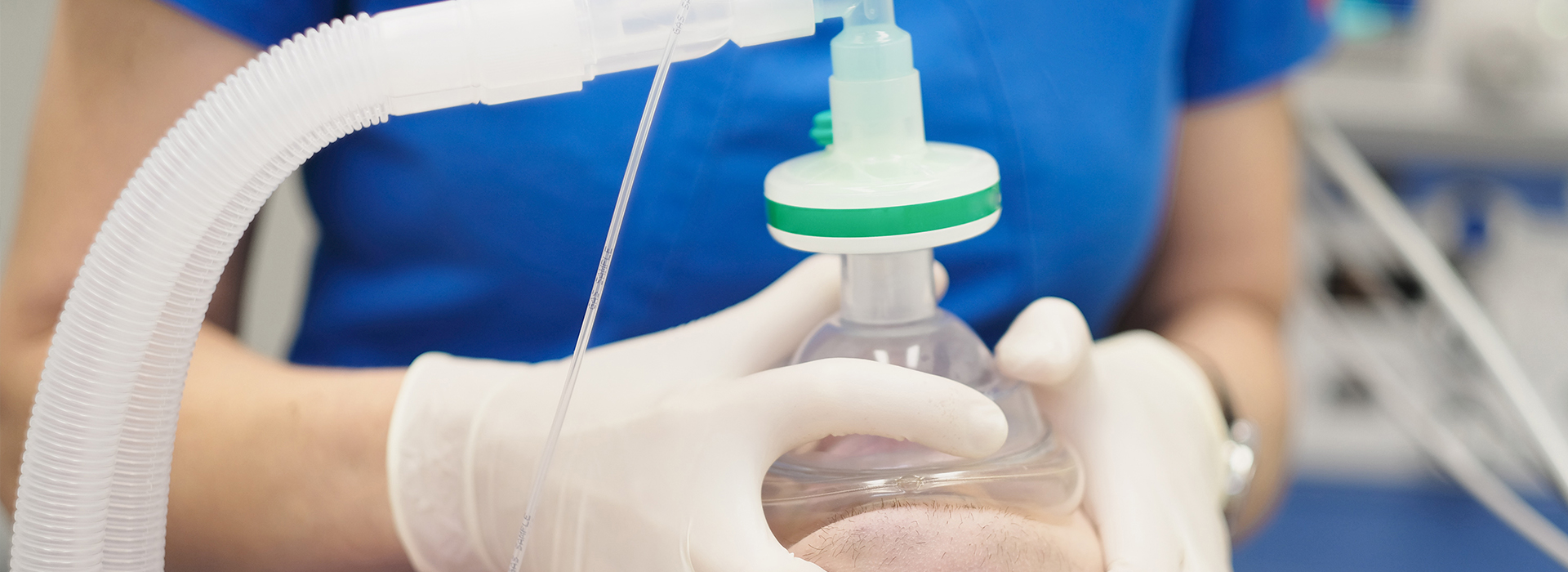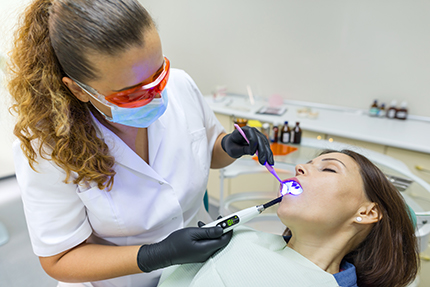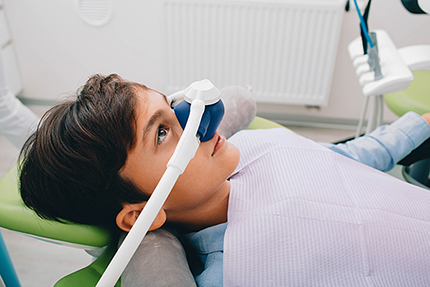Existing Patients
(740) 344-4549
New Patients
(740) 212-1897

For many people, a trip to the dentist can trigger a nervous stomach, a racing mind, or an urge to cancel appointments altogether. Dental anxiety affects millions of Americans, but it doesn't have to stand between you and good oral health. At the office of Brian Howe DDS, Family Dentistry, we offer carefully managed sedation options designed to reduce fear, increase comfort, and make it possible to receive comprehensive dental care with confidence.
Sedation dentistry is not about putting you to sleep and taking control away — it's about creating a calm, controlled environment where you can tolerate treatment without distress. Whether you need a single filling, a series of restorative visits, or a longer surgical procedure, sedation can help you move through care with less pain, less memory of the procedure, and far less anxiety.
Our approach begins with conversation: we review your medical history, discuss prior dental experiences, and tailor a sedation plan to match your needs and comfort level. Safety is always the priority; we combine modern monitoring techniques with proven sedation protocols so you, your family, and your dentist can proceed with care that feels respectful and predictable.
If nerves have kept you away from routine exams or timely treatment, sedation dentistry may be the bridge you need to protect your smile and your overall health. Read on to learn how sedation works, who benefits most, how options differ, and what to expect before, during, and after a sedated visit.
Sedation dentistry is about more than relieving immediate fear — it changes how patients experience the entire appointment. Many people describe sedation as a sense of deep relaxation or calm focus that reduces awareness of sounds, sights, and routine sensations in the mouth. For those who have avoided care, this can be the difference between progressive dental problems and timely, preventive treatment.
Sedation can also shorten perceived time. Procedures that might feel long and uncomfortable when you are anxious can pass quickly under sedation, making it easier to complete larger treatment plans in fewer visits. That is particularly helpful for patients who have busy schedules, mobility issues, or difficulty sitting for extended periods.
Another important benefit is improved cooperation and safety. A calm, well-monitored patient allows the dental team to work more efficiently and precisely, which can improve outcomes and reduce the risk of complications. Throughout the visit, trained staff monitor breathing, blood pressure, and overall responsiveness to ensure your safety.

Deciding whether sedation is appropriate depends on a combination of emotional, physical, and practical factors. Some patients have a long-standing dental phobia that prevents them from receiving even basic care; others are comfortable with routine exams but feel overwhelmed by complex procedures. Sedation offers solutions across that spectrum.
Dental phobia — For patients whose anxiety is severe enough to avoid the dentist entirely, sedation provides a pathway back to routine care and prevents the progression of untreated oral disease.
Procedure-specific anxiety — Certain treatments, such as root canal therapy or extractions, can provoke high levels of stress. Sedation helps patients stay calm and cooperate during those targeted visits.
Extensive or lengthy treatment — When multiple procedures must be completed or a single appointment will be long, sedation can increase comfort and allow more to be accomplished in one session.
Strong gag reflex — A sensitive gag response can make even routine care difficult. Sedation reduces that reflex and enables the clinician to work effectively without causing distress.
Sensitivity and sensory issues — Patients with hypersensitive teeth, a strong response to water or suction, or sensory processing differences may find sedation makes treatment tolerable and less traumatic.
Challenges sitting still — Young children, patients with certain disabilities, or those with medical conditions that make sitting for treatment difficult can often receive the care they need safely using sedation techniques.

Not every patient needs the same level of sedation. The choice rests on your level of anxiety, the complexity of the procedure, your medical history, and preferences discussed with your dental team. Our goal is to match the least-invasive, safest option that will provide the comfort you need.
Before recommending a method, we gather information about current medications, prior reactions to sedatives or anesthesia, and any health conditions that might affect sedation. That helps us choose an approach that minimizes risk while delivering reliable relaxation and cooperation.
Conscious sedation describes techniques that relieve anxiety while keeping the patient responsive to verbal cues. Breathing is maintained without airway devices, and recovery is typically rapid. General anesthesia, by contrast, produces a deeper, unarousable state and is reserved for situations where office-based sedation is not suitable. General anesthesia is usually performed in a hospital or surgical center under the supervision of an anesthesiologist.
For most dental work, conscious sedation provides the benefits patients seek — reduced fear, minimal memory of the procedure, and a quick return to normal awareness — without the increased complexity and setting requirements of general anesthesia.
Within conscious sedation, several well-established options are available. Each has advantages depending on the patient's tolerance, medical profile, and the length or invasiveness of the dental work. Below are the primary methods we discuss and offer where appropriate.
Nitrous oxide, commonly called "laughing gas," is inhaled through a small nasal mask and blended with oxygen for safety. It produces mild to moderate relaxation, works quickly, and wears off fast once the mask is removed. Because recovery is rapid, many patients are able to leave the office without an escort after a brief observation period.
Oral sedation uses a prescribed pill taken before the appointment to calm nerves. The degree of sedation ranges from light drowsiness to deeper relaxation depending on dose and the medication chosen. Patients receiving oral sedation typically need someone to drive them to and from the appointment and to remain available during the initial recovery period.
IV sedation administers medication directly into a vein, producing faster onset and easy titration during the procedure. This option is useful for longer or more complex care when a deeper level of relaxation is desired. IV sedation requires fasting beforehand and an escort to transport the patient home afterward while the medication fully clears.
All conscious sedation is provided with appropriate monitoring and by clinicians trained in airway management and patient safety. Documentation of vital signs and responsiveness is maintained throughout the visit to ensure a controlled experience.
Preparation helps ensure a smooth, safe sedated appointment. We ask patients to bring a list of medications and any recent medical records that might affect sedation decisions. For some methods, such as IV sedation, patients must fast for a specified period beforehand — your care team will provide clear instructions tailored to the chosen technique.
Arrange for a responsible adult to accompany you when required. Some forms of sedation allow patients to drive afterward, while others make driving unsafe for several hours. Regardless of the method, plan for a restful rest of the day and avoid making major decisions or operating heavy equipment until fully alert.
Communicate openly about prior experiences, allergies, or health changes. This transparency helps the dental team select medications and dosages that are both effective and safe. If you have questions about the plan, ask — informed patients are more relaxed patients.
After sedation, most patients experience a brief period of grogginess or slowed reaction time that gradually resolves. Nitrous oxide wears off fastest, oral medications take longer to clear, and IV sedatives may linger into the afternoon. Your clinician will observe you until it is safe for you to go home with your escort, and provide written instructions for aftercare.
You may have little to no memory of the dental procedure itself — a common and sometimes welcome effect of sedation. Mild side effects, such as dry mouth or temporary lightheadedness, can occur but typically resolve quickly. If you notice unusual symptoms after leaving the office, contact the practice to speak with a clinician.
Follow-up care is the same as for unsedated appointments: keep scheduled checkups, maintain daily oral hygiene, and contact the office if problems or questions arise. When sedation removes the barrier of fear, patients are more likely to attend follow-up visits and complete recommended treatment, which supports long-term oral health.
At Brian Howe DDS, Family Dentistry, our goal is to make dental care accessible and comfortable for every patient. If anxiety has kept you from getting the care you need, consider whether sedation dentistry could help. Contact us to learn more about the options we offer and to discuss which approach may be right for you.
Sedation dentistry uses medications to help patients relax during dental procedures while maintaining safety and comfort. It ranges from mild calming effects to deeper relaxation, depending on the method chosen and the patient’s needs. General anesthesia, by contrast, induces an unarousable state and is typically administered in a hospital or surgical center under an anesthesiologist’s care.
Most dental sedation provided in an office setting is conscious sedation, meaning patients remain breathing on their own and can respond to verbal cues. The goal is to reduce anxiety, minimize memory of the procedure, and allow clinicians to work efficiently without the additional complexity of general anesthesia. Your dental team will explain which approach best matches the planned treatment and medical considerations.
Patients who experience significant dental anxiety, a strong gag reflex, or difficulty sitting for extended periods often benefit from sedation dentistry. It also helps people who need multiple procedures at once, have low pain tolerance, or require complex restorative or surgical care. A careful medical review determines whether sedation is appropriate based on current health, medications, and prior reactions to sedatives.
Children and patients with special needs may qualify for specific sedation approaches when alternative behavior management is insufficient. The decision is individualized: clinicians weigh emotional, physical, and procedural factors to select the least invasive option that achieves comfort and cooperation. Open communication about medical history and prior experiences is essential to that process.
Common office-based sedation methods include inhalation sedation with nitrous oxide, oral sedation with prescribed medication, and intravenous (IV) sedation for faster onset and precise control. Nitrous oxide produces mild to moderate relaxation and wears off quickly after the mask is removed. Oral sedation typically involves a pill taken before the appointment that ranges from light drowsiness to deeper relaxation depending on the dose.
IV sedation delivers medication directly into the bloodstream, allowing clinicians to adjust levels during treatment and achieve deeper sedation when needed. Each method has distinct preparation and recovery considerations, and clinicians choose the option that balances patient comfort with safety. Monitoring and trained staff accompany all sedated visits to maintain stable vital signs and responsiveness.
Safety starts with a thorough medical review, including medications, allergies, and prior anesthesia experiences, followed by tailored sedation planning. During the appointment, trained staff monitor breathing, blood pressure, heart rate, and oxygen levels to detect any changes and respond quickly. Clinicians providing sedation are trained in airway management and emergency protocols to maintain patient safety throughout the visit.
Equipment such as pulse oximeters and automated blood pressure monitors are used alongside clinical observation to maintain a controlled environment. The team documents vital signs and responsiveness throughout the procedure to support predictable recovery. When deeper or riskier sedation is indicated, referral to a facility with an anesthesiologist may be recommended for added oversight.
Preparation varies by sedation type but commonly includes providing a complete list of medications, recent medical history, and any prior reactions to sedatives or anesthesia. For certain methods, such as IV sedation or deeper oral sedation, fasting for a specified period before the appointment is required to reduce the risk of aspiration. Your dental team will give clear, written instructions tailored to the chosen sedation approach.
Plan to arrange a responsible adult to accompany you when required, and avoid driving, operating heavy machinery, or making important decisions for the remainder of the day if deeper sedation is used. Wear comfortable clothing and avoid alcohol or nonprescribed drugs before your visit. Communicating openly about fears, past experiences, and medications helps the team create a safer, more comfortable plan for your care.
During the procedure you will generally feel relaxed and may have reduced awareness of sounds and sensations, while still being monitored for responsiveness and vital signs. Nitrous oxide wears off quickly and patients often feel alert shortly after the mask is removed, while oral and IV sedatives may cause drowsiness that lasts longer. The clinician will observe you after the procedure until it is safe for you to leave with any required escort.
It is common to have little or no memory of parts of the visit, which many patients find helpful when anxiety is a barrier to care. Mild side effects such as dry mouth, lightheadedness, or temporary grogginess can occur and usually resolve within hours. If you notice unusual or prolonged symptoms after going home, contact the practice for guidance.
All medical procedures carry some risk, and sedation dentistry is no exception; common short-term effects include drowsiness, nausea, dry mouth, or minor dizziness. Serious complications are rare when sedation is provided by trained professionals using appropriate monitoring, but risks increase with certain health conditions, medication interactions, and deeper levels of sedation. A preoperative review helps identify and mitigate individual risk factors.
Your dental team will explain potential side effects and signs that warrant follow-up care so you know what to expect after sedation. Close monitoring during the procedure and clear post-procedure instructions reduce the likelihood of complications. If you have respiratory, cardiac, or other significant medical issues, the team may recommend additional precautions or a referral to an appropriate facility.
Yes, when chosen and administered appropriately, sedation can help children and patients with special needs receive necessary dental care safely and comfortably. Pediatric and special-care sedation decisions account for developmental stage, behavior, medical history, and the complexity of the dental work. Clinicians with pediatric or special-care experience follow established guidelines to select appropriate dosing and monitoring strategies.
Some forms of sedation are more suitable for children than others; for example, nitrous oxide is commonly used for mild anxiety and routine procedures, while deeper sedation requires stricter fasting and monitoring rules. The dental team will discuss benefits, risks, and required escorts with caregivers to ensure a safe, coordinated visit that meets each patient’s needs.
Recovery time depends on the sedation method: nitrous oxide clears within minutes, oral sedation may take several hours to wear off, and IV sedatives can last into the afternoon. Many patients have limited recall of the procedure, which is an intended benefit for those with severe anxiety. Your clinician will observe you until basic safety criteria are met and provide written aftercare instructions for the remainder of the day.
Because reaction times and judgment may remain impaired for some hours after deeper sedation, avoid driving, alcohol, or important decisions until fully alert. Hydration, rest, and following any medication guidance speed recovery and reduce side effects. If memory lapses or unusual symptoms persist beyond the expected timeframe, contact the practice for advice.
Begin by describing your past dental experiences, specific fears, and any concerns you have about treatment so the team can tailor an approach to your comfort level. Share a complete list of prescriptions, over-the-counter medications, supplements, and any recent medical diagnoses or hospitalizations. Mention previous reactions to sedatives, anesthesia, or medical procedures so clinicians can plan appropriately and avoid interactions.
Ask about the advantages and limitations of each sedation option, what monitoring will be used, and what to expect for preparation and recovery. If you prefer a particular method or have logistical constraints such as transportation, communicate that information so the team can recommend a feasible plan. At the office of Brian Howe DDS, Family Dentistry, we prioritize clear communication to match the safest, least-invasive option with your needs.
Our friendly and knowledgeable team is always ready to assist you. You can reach us by phone at (740) 344-4549 or by using the convenient contact form below. If you submit the form, a member of our staff will respond within 24–48 hours.
Please do not use this form for emergencies or for appointment-related matters.
